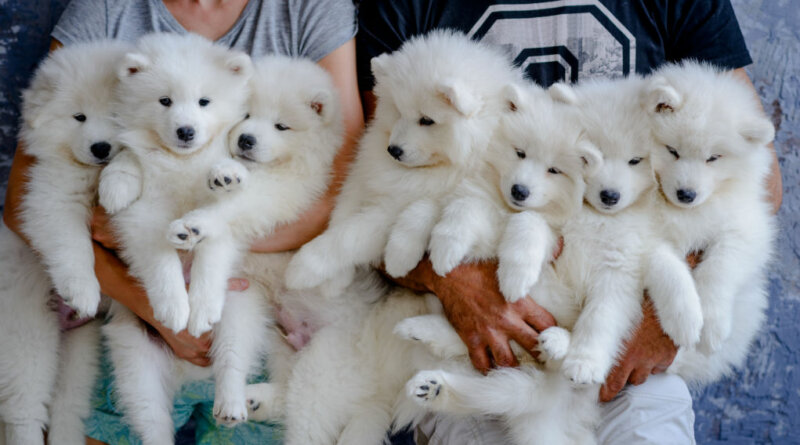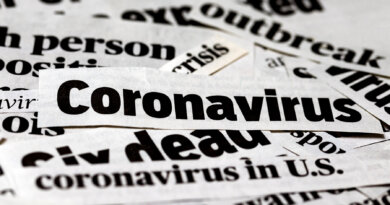Pros and Cons of Inbreeding Dogs – Top Dog Tips
Anyone that’s ever looked for a purebred dog has probably come across articles talking about inbreeding.
Inbreeding is the intentional mating together of two closely related dogs.
Some examples include father/daughter, mother/son, and sibling groups.
For many breeders, this mating method is valuable for fixing specific breed traits.
For example, the pedigrees of some specific exhibition dogs will likely show that most of their forebears are closely related.
One example of this situation is the famous cat named Fan Tee Cee, shown in the 1960s and 1970s.
This cat appeared in multiple Siamese pedigrees, occasionally several times in a single pedigree.
This tracing occurred because breeders became anxious to make their lines specific and tailored.
After all, superb specimens of the breed were always well sought-after, whether stud services or offspring. As such, this approach won the approval of many show judges.
Unfortunately, inbreeding typically holds specific and deliberate problems.
With ongoing inbreeding, the limited gene pool often means that deleterious genes become overrun and widespread, causing the breed to lose vigor.
Many traits become uniform for laboratory animal suppliers, who depend on a constant strain of animals.
The animal is immuno-depressed or bred true for disorders. These animals become so inbred they are genetically identical (essentially, clones!).
Alternatively, a controlled level of inbreeding can regulate desirable traits in farm livestock.
These traits often include milk yield, rate of growth, lean/fat ratios, etc.
Are There Natural Occurrences of Inbreeding?
Understanding the Wolf Pack
Inbreeding does occur naturally, particularly in the wild.
A wolf pack, for instance, is often isolated from other groups by geographical or other notable factors.
These packs can ultimately become very inbred. Any effect on these packs is noted in later generations, as deleterious genes become noticeable.
As the pack progresses, these genes ultimately become the majority, with virtually every wolf holding the same genetic profile.
Scientists have uncovered that wolves living in different areas will remain genetically similar.
This profiling may be due to the desolation of natural habitat, drastically reducing wolf numbers in the past.
When this occurs in nature, a genetic bottleneck occurs, limiting diversity.
A lack of genetic diversity for the wolf will increase susceptibility to disease, particularly as they cannot resist certain viruses.
Extreme levels of inbreeding can influence reproductive success, limiting litter sizes and rising mortality rates.
Scientists are trying to develop more varied gene pools by introducing wolves from other areas into highly inbred packs.
Looking at the Giant Panda
Another species suffering from the influence of inbreeding is the giant panda.
Like the wolf, the giant panda now struggles with poor fertility and high infant mortality rates.
As the panda populations become increasingly isolated from others (namely due to humans blocking direct routes to move from one area to another), pandas suffer from finding a mate with different genes.
The Cat Family Suffers
With cats, natural isolation and inbreeding offer rise to domestic breeds.
The Manx, which developed on an island for taillessness, became incredibly widespread, despite the problems.
There was minimal outcrossing, and researchers reflected the influence of inbreeding in smaller litter sizes, stillbirths, and spinal abnormalities.
Many researchers believe the smaller litter sizes stem from reabsorption due to genetic abnormality.
Many cat workers dealing with wild animals have documented the effects of inbreeding.
A few feral colonies become highly inbred thanks to isolation from other animals or because potential mates are all neutered.
Within these colonies, researchers found higher-than-normal averages of specific traits.
Increasing averages in inbred colonies include polydactyly, with the most significant number of toes being nine per foot, or dwarfism can occur.
With increased levels of dwarfism, the higher maternal complication may occur.
A few genetic anomalies aren’t considered dire (for example, calico pattern cats) to more severe deformities like structural or inheritable conditions.
Unfortunately, the ultimate result of ongoing inbreeding is the terminal lack of vigor and likely animal extinction.
The extinction is due to decreased fertility, gene pool contracting, abnormalities, and mortality rates.
Is Selective Breeding the Same as Inbreeding?
Selective breeding, commonly called artificial isolation, can produce a similar effect.
If trying to create a new breed from attractive mutations, the gene pool is initially relatively small with frequent mating between two dogs.
A few species face problematic consequences as the result of spontaneous mutation.
One example is increased susceptibility is hip dysplasia and achalasia in German Shepherds.
These traits are more common in specific breeds and breeding lines than in others, suggesting that inbreeding directly connects these faults.
It’s imperative to select suitable outcrosses to reintroduce these healthy genes, which might otherwise be lost.
Selective Breeding within Zoos
A zoo will often engage in captive breeding programs but remain astutely aware of the desire to outcross its stock.
Captive populations are at high risk of inbreeding malformations, especially with few mates available to the animals.
As such, zoos will borrow animals from each other for the genetic diversity of offspring.
A Dog’s Detriment with Inbreeding
While inbreeding holds problems for anyone within the animal realm, dog breeders must remain aware of the potentially dire consequences for their animals.
Recent attempts to change the facial structure of the Pug, for example (to create a flatter face and round head), have ultimately required more C-sections and other congenital problems overall.
Many of these genetic malformations are causing some breeds to lose the natural ability to give birth without human intervention.
Within the dog world, multiple breeds now prominently exhibit hereditary faults.
These results directly relate to the particular use of “type-y” studs, later found to carry genetic defects detrimental to the animal’s health.
When breeders finally identified the problem, the issues became widespread as the breeder extensively used the stud to improve the breed.
In previous years, breed enthusiasts crossed some dog breeds with different species to improve the type.
The strong emphasis on preserving breed purity has pushed this method out of possibility.
Understanding Minority and Rare Breeds
Those individuals involved with minority or rare breeds of livestock often face a dilemma of balancing purity against the substantial risk of genetic conformity.
Many enthusiasts encourage minority breeds, as the genes may prove helpful in the future.
Simultaneously, low numbers of the breed will often involve running a known risk of becoming unhealthy through inbreeding.
If trying to bring a species back from the point of extinction, many believe introducing “new blood” to the line through crossing with unrelated breeds should be a last resort.
Any introduction of new bloodlines into the breed can ultimately change the very character of the breed preserved.
For livestock, successive generations of progeny need at least six to eight generations before the offspring can classify as purebred.
When it comes to the dog industry, breed purity is equally desirable. Unfortunately, these may force ridiculous lengths for the breeder.
For example, some fancies fail to recognize various hybrid breeds, including the Parti-Schnauzer because it produces variants.
A breed that cannot have some variability will likely find itself in the same predicament as the giant panda and wolves.
Many people believe there is no oversight in recognition, shifting the focus from “purebred” dogs to “pedigree” dogs.
This definition is imperative for those breeds requiring the occasional outcrossing to maintain the typing.
The Implications of Inbreeding for Dog Breeders
Although many dog breeders know the potential pitfalls of inbreeding, novice breeders are tempted to continue using one or two closely related lines to preserve or improve the type.
To limit problems with lineage, breeding to unrelated lines of the same breed or efficient outcrossing to another breed can help.
Although outbreeding has certain risks of undesirable traits that will eventually need time to breed out, outcrossing prevents a breed from stagnating by introducing new genes into the pool.
It is imperative to outcross to various different dogs to consider a line genetically sound, preferably not closely related.
How to Identify Breeds Too Closely Inbred
The easiest and earliest marker of lines becoming too closely inbred is a reduction in fertility.
Male dogs are chronically known for low fertility rates. Smaller litter sizes or higher puppy mortality can also be an indicator.
Whenever a large proportion of dogs is lost to a specific disease can suggest a failed immune system or diversity.
For instance, 50% of individuals within a breeding program dying of simple infections should be cause for concern with the lineage.
Another characteristic of inbred dogs is prominently displayed abnormalities regularly.
These “bad” genes become more widespread, ranging in significance.
For some, undesirable features like poor bite may take place. Occasionally, these faults can trace to a single female or male that should be removed from the breeding program.
Ignoring these traits and continuing to enable the breeding of said dog can potentially allow the faulty gene to become widespread, primarily if descendants are bred together.
Signs of Inbreeding in Dogs to Watch Out For
Inbreeding can cause extensive health issues, along with behavioral problems.
There are key indicators to watch for with your puppy, especially if it is inbred.
Damaged DNA Increases Likelihood of Health Problems
Inbreeding dogs damages genes. With inbred dogs, the broken or damaged sequence passes through both parents onto offspring.
Three forms of mutations (recessive, dominant, and additive) can quickly dissolve with more significant genetic variance.
Increased Fertility Problems
The Institute of Canine Biology indicates that dog breeds with more than 5% inbreeding are at increased risk for smaller litters and reduced fertility.
Unfortunately, most dog breeds hold high degrees of inbreeding, with only 20 breeds in the world with less than 25% inbreeding in their genes.
Inbreeding Depression is a Reality
Also identified as an unspecific decrease in fitness will drastically reduce the quality of a dog’s life, increasing mortality rates overall.
Major health issues like neurological conditions, joint problems, skin issues, and other cognitive issues all become increased probabilities with the level of inbreeding.
Increased Levels of Aggression in Dogs
Many inbred dogs are less intelligent than other members of their breed.
Unfortunately, this also accounts for higher-than-normal rates of behavioral issues.
Aggressive tendencies like snapping, biting, rough play, or severe attacks are more common in inbred dogs.
Inbreeding Can Increase Anxiety in Offspring
Just as inbred dogs can hold increased levels of aggression, these breeds are more likely to have personality disorders.
Impulsive behaviors like chasing vehicles, darting or dashing, lack of affection for the human family, separation anxiety, or fearfulness are all more familiar with inbred dogs.
Physical Issues with Dogs
Inbred dogs are more likely to struggle with minor infections or flu.
These dogs often have lowered immune systems, which makes them less able to fight off viruses and infections.
Many purebred dogs also suffer from exotropia (a vision issue that prevents focusing on anything), skin, digestive, or joint problems.
Increased Congenital Defects
Domestic animals hold many hidden genes like pink noses, blue eyes, skin color, or specific markings.
When male and female dog carries the specific recessive gene, results can be either favorable or unfavorable.
Many birth defects or congenital defects occur with hereditary or nutrition-based disorders.
Most inbred dogs will have functional and structural congenital defects.
The defects are classified by the body or primary area it involves, but as multiple bodies become involved, classification systems are often complicated.
Pros and Cons of Inbreeding Dogs: Conclusion
Benefits of inbreeding may include doubling good genes within a breed, establishing predictable offspring, removing unwanted traits, or eliminating recessive genes.
Unfortunately, the faults often outweigh the potential benefits.
Although many different dog breeds have high levels of inbreeding, some breeds are worse than others.
When purchasing a puppy, always ensure the breeder is reliable and reputable.
While there are pros and cons in adopting an inbred dog, information is essential.
Talk to the breeder about the lineage of the dogs and how they feel about inbreeding.
Request a genetic COI to determine the family history before purchasing a puppy.
When buying a puppy, make sure to get from a reputable breeder that protects the genetic health and well-being of the breed over profit margins.
ALSO READ: Inbreeding Dogs: What You Should Know
Related









